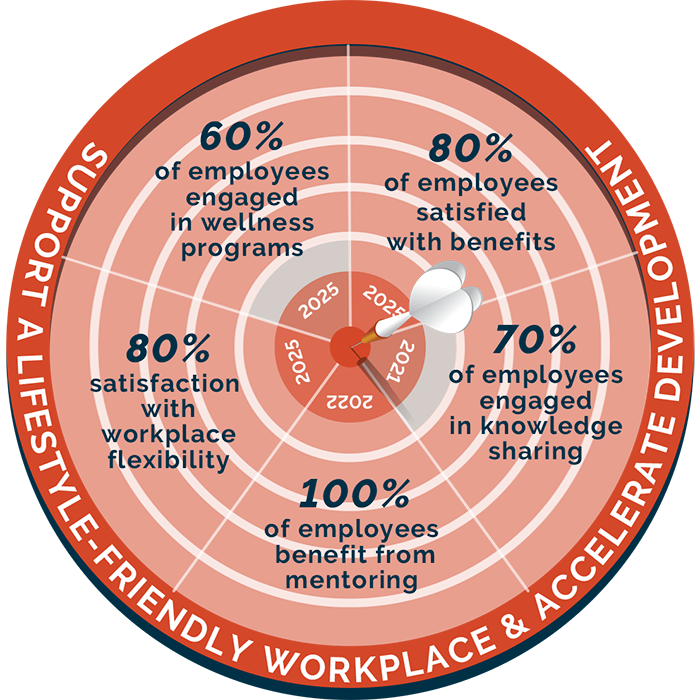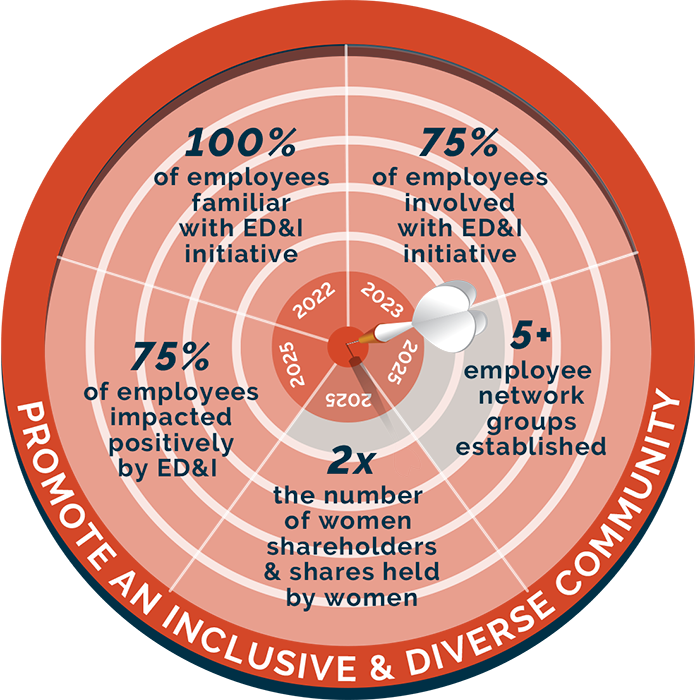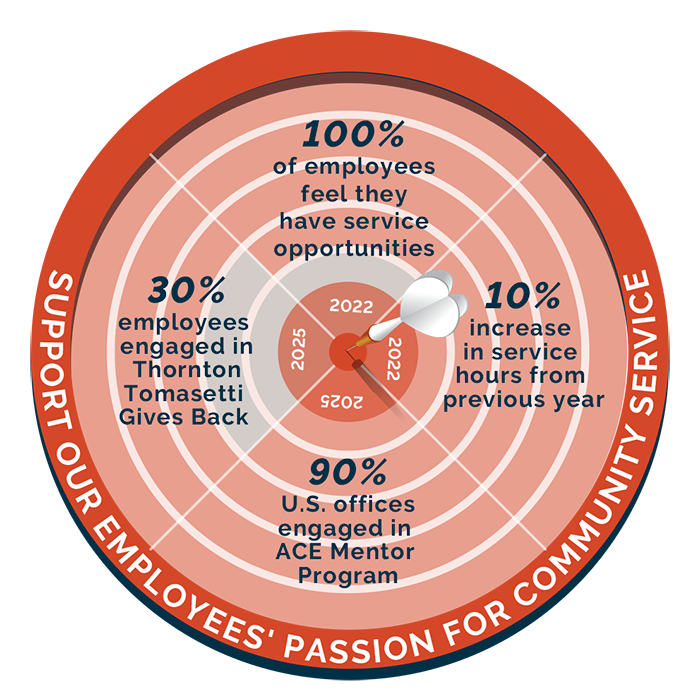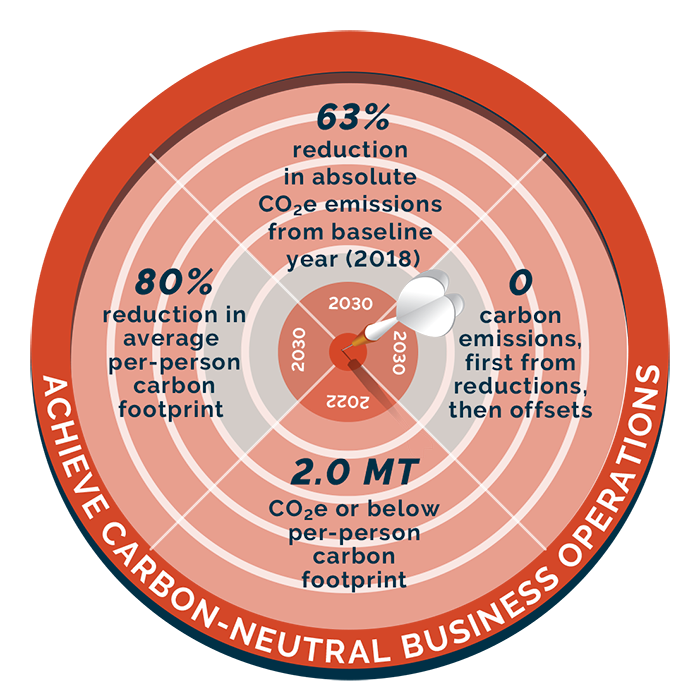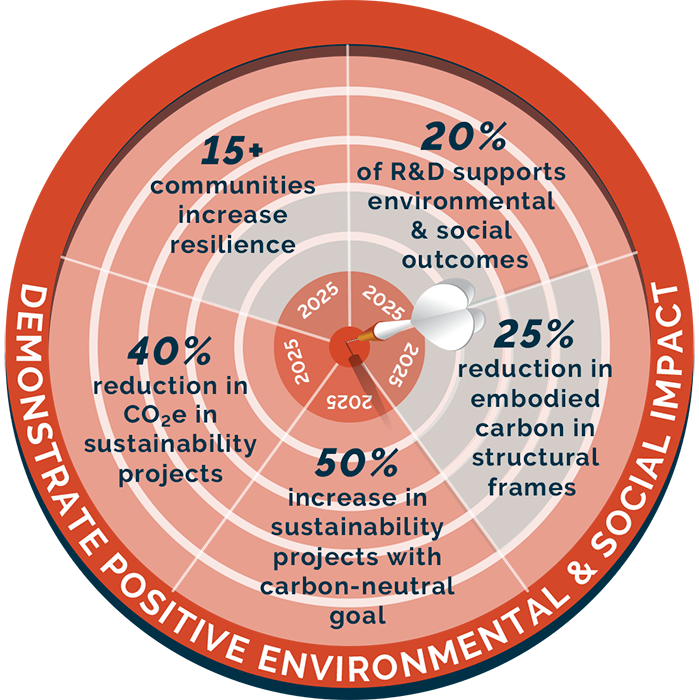
Corporate Responsibility Goals & Materiality

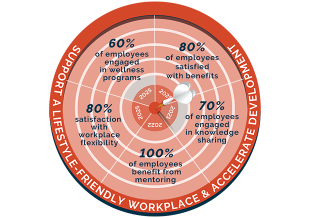
Our goals help illuminate the environmental, social and governance (ESG) topics that are most material to our business and of interest to our stakeholders.
Early in 2022, we conducted a materiality assessment that identified topics for measurement and reporting. This assessment built on our prior years of sustainability reporting and our corporate responsibility strategic planning.
We examined these questions: What is the impact to our business, and what is important to our stakeholders? Our stakeholders include our employees and potential hires; owners, clients and partners; potential clients and partners; our suppliers; and our communities.
We approached our materiality assessment with the following assumptions:
- After almost a decade of corporate responsibility reporting, we had identified social and environmental topics important to our business. A materiality assessment could help uncover impact areas we had not explored.
- We could learn about what was important to our stakeholders by researching the material topics that rose to the top for clients and partners within our sector.
- Thornton Tomasetti is a private service company in a nonmanufacturing and nonextractive industry. Therefore, topics that are significant to large public companies may not be immediately significant to our firm.
We started the process by outlining the Global Reporting Initiative (GRI) material topics and the legacy topics we had been measuring and chronicling through our annual sustainability reports. Since no GRI sector standard exists for engineering, we didn’t include any sector standard topics. Then we reviewed the GRI reports of client and partner firms in our industry and identified the material topics they value. After acquiring this information, we held dialogue sessions with our department leaders, executive committee and corporate responsibility steering committee. Co-CEO Peter DiMaggio approved the final list of significant topics for reporting.
Three tiers of material topics emerged from these sessions:
- Tier 1 topics are of highest materiality to Thornton Tomasetti and are recounted in this 2022 corporate responsibility report.
- Tier 2 topics are of importance to our stakeholders and to the engineering sector (for example, occupational health and safety) but currently are not outstanding risk factors or major impact areas for our firm. We may consider including some or all of these topics in future reporting.
- Tier 3 topics do not apply to our business model or sector (for example, freedom of association).
Our Tier 1 topics include economic performance, energy, emissions, employment, training and education, diversity and equal opportunity, and nondiscrimination. In addition to these topics listed by GRI, we include our company-specific legacy topics of community service and employee wellness.
When evaluating the impacts of these material areas, we considered both short- and long-term impacts and any areas of grievances. We recognize that our Tier 2 topics may not be immediately important, yet they could become more material to our business and sector in the long term. In selecting material topics, we considered that Thornton Tomasetti often provides a service to a multidisciplinary design team as a subcontractor to another firm and therefore may not have direct influence on suppliers to our projects.
We have selected nine material topics that are linked to our corporate responsibility goals.
| Material Topic | Impacts | Policies or Commitments | Goals, Actions, Measurement & Engagement |
|---|---|---|---|
| Economic Performance |
|
|
|
| Energy |
|
|
|
| Emissions |
|
|
|
| Employment |
|
|
|
| Training & Education |
|
|
|
| Diversity & Equal Opportunity |
|
|
|
| Nondiscrimination |
|
|
|
| Community Service |
|
|
|
| Employee Wellness |
|
|









